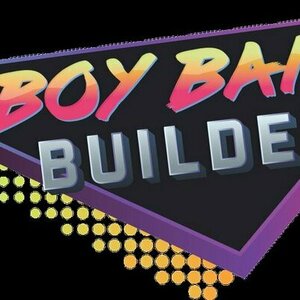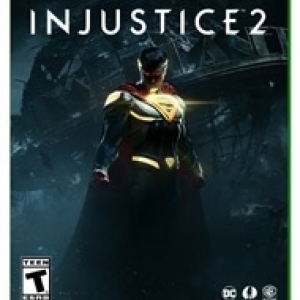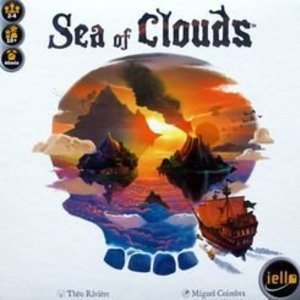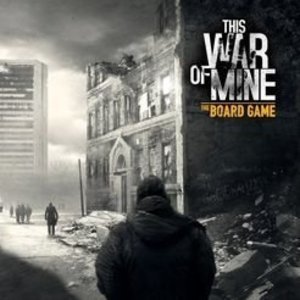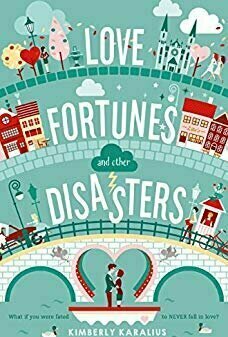
Dream Foot
Music and Education
App
Dream Foot lets you play chords with a tap, a MIDI keyboard, or a MIDI foot controller. Choose one...
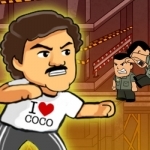
Narcos: Pablo's Adventure
Games
App
Plata o Plomo ! Narcos: Pablo's Adventure is the perfect game for everyone who loves to play...
Purple Phoenix Games (2266 KP) rated Boy Band Builder: The Card Game in Tabletop Games
Dec 21, 2021
Boy Band Builder (BBB from here out) is a card drafting and band-building game for two to four players. In it, players are band managers tasked with creating the next big group of talented and attractive boys, with the winner of the game being they who earn the most money from assembling the best band and playing the most lucrative gigs.
DISCLAIMER: We were provided a copy of this game for the purposes of this review. This is a retail copy of the game, so what you see in these photos is exactly what would be received in your box. I do not intend to cover every single rule included in the rulebook, but will describe the overall game flow and major rule set so that our readers may get a sense of how the game plays. For more in depth rules, you may purchase a copy online or from your FLGS. -T
To setup, separate the cards by type and shuffle each stack independently. The Gigs deck is placed on the table with four Gigs displayed from the top of the deck. The Artists and Star decks are placed on the table and each player is dealt three Star cards to start the game. It is now setup and managers are ready to build bands… of boys!
BBB is played over a series of rounds, where each player will take two actions each turn. These actions are Audition, Draw Star Cards, Play a Star Card, and Do a Gig. When a manager Auditions boys for the band, they draw the top three Artist cards, choose one to add to their band, and then discard the rest to the bottom of the deck. The cost to add the boy to the band is shown in the upper right hand corner and represents the number of Star cards to be discarded from hand. Artists are added to band (tableau) and ready to begin rehearsing. At least, I hope they are rehearsing.
Additionally, the active manager may Draw Star Cards to increase their hand. Simply draw two Star cards from the top of the deck. Alternatively, the manager may choose to Play a Star Card for its stats by slipping the card under a boy to increase his level of Pipes, Moves, Heat, or Cool stats (check out the photo below where I went hard on buffing Old Frank).
Finally, if the boy band members currently possess the appropriate amount of stats, the manager may choose to Do a Gig. They choose one of the face-up Gigs cards, take it to their score pile (assuming they possess the correct type and number of stats), and then do a little dance to celebrate a completed Gig. To signify the end of their turn, the active manager draws a Star card and passes to the next player. The game ends once the appropriate number of Gigs have been completed by a manager, as detailed in the rules per number of players. The manager with the highest total of money earned from Gigs cards is the winner, and receives all the Grammy nominations afforded to them.
Components. This is a bunch of cards in a tuckbox. The cards are all fine, but the true hero here is the artwork. I cannot express how much I appreciate the decision to keep the art style modern, and the faces blank. I believe it is mostly due to the fact that all of us who were not in boy bands were all a bit jealous of those who were, but I will publicly state that my official opinion is because these boys don’t really need faces. Body language speaks volumes, and the art style reflects that extremely well. Mad props from me on the artwork.
The gameplay here is very intuitive, even though I had a couple questions that were not made clear in the rulebook. You need Star cards in order to buff Boys so they can do Gigs, and making sure that your band has all the right stats to complete the more profitable Gigs. I believe the game lasts an appropriate amount of time; it does NOT overstay its welcome, which is a huge thing for a filler game such as this. I do wish there were more off-the-wall characters like Old Frank and Lil’Hop, and I also wish the Star cards’ backgrounds were a little more interesting to look at, but the game ultimately looks good and plays well too. There are a few extra surprises to be found in the game that I will let our readers discover, including some Take That card that can hinder opponents.
Boy Band Builder can be super quick and competitive, or can be more leisurely and relaxed. This is a great thing for a cute little card game, and though the theme is something with which I am not at all enamored, a love for boy bands is not required to enjoy Boy Band Builder. I can see myself breaking this out with the right people, but I don’t necessarily foresee having this on stand-by for every game night. If you are in the market for a uniquely-themed card game you can chair dance while playing, then check out Boy Band Builder. It can be found on the Amazon store by clicking this link. Enjoy!
Daniel Boyd (1066 KP) rated the PlayStation 4 version of Injustice 2 in Video Games
Oct 17, 2017 (Updated Oct 3, 2018)
I was so pleasantly surprised when I played the first Injustice game. I am a big DC fan, but fighting games aren’t one of my preferred genres in gaming, yet this fighting game set in the DC universe blew me away. The story was intriguing, the characters were diverse and it was a unique taste on a beloved universe. Therefore, the sequel had a fair amount to live up to and while it is still a fun fighting game with a multitude of colourful characters, it doesn’t feel anywhere near as special as Gods Among Us did.
The setup this time around revolves around Brainiac descending upon the earth in search of Kal-El and Kara, the last two remaining Kryptonians and eliminating them. Since the events of the last game, Batman has been keeping Superman in a special prison that suppresses his powers and the world has remained relatively free of crime, however Brainaic’s arrival changes all this. From here onwards we have our superhero story, which sees epic battles occur and mortal enemies being forced to work together against a common evil.
Most importantly, the game is fun. Gameplay feels pretty tight, which is both a positive and a negative when compared to Gods Among Us. The controls feel more solid and purposeful, but also feel more restrictive and less forgiving since the last time. This makes button bashing a void method and forces you to learn intricate button sequences if you want to pull off a decent combo. Thankfully, the super-moves are really fun to watch and make you feel awesome when you manage to successfully pull them off.
I’m going to delve deeper into the game’s story mode, so if you want to avoid spoilers, I would skip this paragraph. I was so looking forward to the story mode in this game, I loved the story mode in the first game and was relying on this one to deliver also, unfortunately I found it jarring and hard to swallow, even as a lifelong comic book fan. The story in Gods Among Us was controversial amongst DC fans, as it turned a number of iconic characters on their head, causing them to fight on the opposing side from what we are used to seeing. In that game though, I thought it worked, character motivations were clear and there was context given for the heroes and villains who switched sides. This time around, characters switch sides faster than a tennis ball at Wimbledon and half the time, there is no apparent reason for it. The most jarring moment came when Wonder Woman turned on Kara. In the mission that preceded it, Wonder Woman inhales Scarecrow’s toxin and through a hallucination and it is revealed that her worst fear is turning on her friends, yet in the mission immediately after this sequence, she turns on her friends in reality! With no apparent motive to do so other than she is unconditionally on Superman’s side, making no moral decisions for herself. It came across so awkwardly and felt lazy, it’s as if the writers totally forgot about the last scene that illustrated that the last thing that Wonder Woman wants to do is turn on her friends.
I did appreciate the graphics in the game. Netherealm have really stepped up their game since the first Injustice and there are some truly stunning moments throughout Injustice 2 and I don’t just mean the cut-scenes. The area transitions are gorgeous to look at, the super-moves are very visually impressive and the detailed locations where the fights take place are also effective. The multiple unique environmental hazards present in each environment add an extra layer of unpredictability and opportunity to the fights and they do a good job of helping a player on the back foot start a comeback against their opponent. Facial animations and voice acting across the stable of characters are also solid.
Although the game is technically sound and the graphics are good looking, I wasn’t a fan of the character design overall this time around. The last game updated a few character designs, but for the most part followed the traditional style that the characters are portrayed in. This time, a lot of the character’s costumes look goofy and come off looking like toy armour rather than something a superhero would realistically wear. Also the redesign of the Joker makes no sense. Not only did it look like they were trying too hard to make him look edgy, but in this universe, Joker was killed at the beginning of the first Injustice game and he didn’t look like that when he died. In this game he appears to Harley through one of Scarecrow’s hallucinations and looks similar to the Jared Leto version of the character, but why? As far as we know, he has never looked like that in this universe during the time he was alive and if you are going to redesign him, don’t base it on Leto’s Joker, (AKA the worst version of the character.)
The co-op is as much fun as you would expect and certain matchups are more interesting than others. As with the first Injustice, pulling off combos and super-moves on someone that is physically sitting next to you is a lot more satisfying than doing it to some AI or an online player thousands of miles away. There is nothing quite like the couch co-op experience when it comes to a fighting game. Injustice 2 is a lot of fun to play in a group as well, setting up a tournament and throwing in real life forfeits also makes things more interesting.
As for the online play, the few matches I did play ran pretty well, there were no sudden glitches present throughout my time, the lag time between the player pressing a button and the character executing the corresponding move wasn’t that noticeable and matchmaking was fairly quick.
In summary, other than some jarring moments in the story, unclear character motivations and some naff character redesigns, there is a fun fighting game here buried underneath all of the nonsense, it’s just a pity that you have to put up with all of these hindrances to get to it. If you are a fan of the first game, then sure, I would recommend you picking this up and playing through it, but if you aren’t familiar with the series and are looking to jump into it and are considering grabbing the latest entry, I would highly encourage you to avoid it. You would be much better served picking up the first game. It will be a great deal cheaper than the latest version, the character designs are better and it’s a lot simpler and more fun overall.
Purple Phoenix Games (2266 KP) rated Quests: Heroes of Sorcado in Tabletop Games
May 26, 2021
Disclaimer: For this preview, we were provided with a Tabletop Simulator file for the demo/prequel adventure. These are not the final components, since it is a digital file, but the artwork and rulebook are mostly finalized – so the gameplay is what you will get in the physical copies of the game. -L
Quests: Heroes of Sorcado is a cooperative, campaign-driven game in which 1-6 players will take on the roles of party members with the goal of completing all 8 of the included adventures. The game does come with a tutorial/prequel adventure to help introduce players to the mechanics and overall gameplay before diving in to the full game. To setup for this Adventure Zero, place the game board within reach of all players, set aside the Campaign and Adventure books, place the Boss card for this adventure face-down above the board, and sort and place Potion/Loot/Armor/Health tokens in their corresponding areas. Set the 6 required Adventurers for the prequel in a circle near the game board, and take the listed Health and Starting Equipment for each Adventurer. The prequel uses only a single Location, so set that Deck in one of the Location spaces of the board, and the game is now ready to begin!
Depending on the player count, everyone will take on the role of at least one of the Adventurers, and the game itself is wholly cooperative. Here is how Adventure Zero works. Each Adventurer, in clockwise order, will be dealt 1 face-down Location card. Then, starting from the first dealt Location card, the Adventurers will take turns revealing their card. Some cards are Events or Story Moments, and prompt players to read from the Adventure/Campaign books. These cards often describe a scenario and require the player to select one of several provided choices, either earning a reward or penalizing the group. Most cards are Monster cards and will begin a combat! Each of the Adventurers has varying values for the four Stats of the game: Strength, Intelligence, Dexterity, and Wisdom. Combat in the game involves rolling a d20 and adding the appropriate Stat modifiers to the roll. You can also use Potions and Equipment to buff your rolls as well. How do you determine success or failure? Every Monster has a weakness to a specific Stat, so you will use that Stat modifier to enhance your rolls. Equal or exceed the Monster’s weakness, and it is defeated! Depending on the difficulty/level of the Monster, you will either fight with 2-6 Adventurers – adding their modifiers and abilities to your roll as well. How you setup your Adventurers is important, as adjacency is what helps determine who can be in each combat. If you defeat a Monster, collect the reward (Loot tokens, Potions, or Treasure cards), and the game continues to the next player. If you lose the fight, the Monster moves to the next Adventurer and combat begins anew. Once every Location card has been revealed and resolved, the Adventurers will reveal the Boss card and the final combat begins! Even though each combat has one primary Adventurer/player at the helm, the game is cooperative, so make sure you’ve got that teamwork mentality!
I have to say that I was pleasantly surprised by Quests: Heroes of Sorcado. The gameplay may seem a bit involved at first, but it actually flows pretty seamlessly and effortlessly. As someone who has played a handful of other campaign-driven board games before, I have to say that this one was by far the easiest for me to learn and play. Resolve Location cards, beat Monsters, and (hopefully) defeat the final Boss. Pretty straight-forward, and I really appreciate that. One thing that helps make it so user-friendly is that the game is based on only 4 Stats, instead of every conceivable Stat used in other role-playing games. That helps keep the game uncomplicated, while still offering players options every turn. Another thing that I really like? The Campaign/Adventure books are pre-written stories, prompts, and scenarios that allow the game to be truly cooperative. No need for an all-knowing Game Master here, as everything is already laid out for you. I also really like these pre-written aspects because it helps deliver the role-playing feel without pressuring the players to create their own campaign. Yes, there are still some ‘choose your adventure’ elements to it, but it doesn’t give so many options to overwhelm players.
That being said, I do have to mention that this is a campaign-driven game, so you will know the main storyline after your first complete playthrough. Although you would know the Monsters/Events/Boss/etc. of each adventure, the shuffle and draw of the decks would allow for variability, and thus replayability. You know the all the twists in the story, but will be able to play with different hero combinations as well! All 8 adventures will take quite some time to complete though, so don’t let the fact that you’ll know the main storyline after one playthrough turn you off from the game completely! Normally, I like to talk about the components of a game. Since this was a Tabletop Simulator version of the game, I am unable to really do so. I will commend the artwork and style of the game though – it is very thematic, engaging, colorful, and fun to look at. The text and abilities are clear, I love the color-coded modifiers, and the cards are all pretty intuitive. I have no doubts that the physical copies of the game will be quality productions as well.
As I stated above, this preview only covers the demo/prequel adventure, and its real purpose is to introduce players to the gameplay. That being said, I know that the full adventures will offer players additional elements (Side Quests, trading Loot and Potions, ‘level up’ the Adventurers, etc.) that will just add to the experience. Yes, there is the ‘one and done’ aspect of a campaign-driven game, but there is so much content in the full game to keep you going for quite a long time. If you’re looking at getting into this genre of game, but are worried about complexity, I would highly recommend Quests: Heroes of Sorcado. The gameplay overall is simple and straight-forward, while still offering the epic campaign feel. This one hits Kickstarter today, so head on over and check it out for yourself!
Purple Phoenix Games (2266 KP) rated Sea of Clouds in Tabletop Games
Sep 5, 2019 (Updated Jul 1, 2020)
In Sea of Clouds, players are Captains of mighty air pirate ships. That’s right – flying pirate ships! Just like the pirate days of yore, your goal is to recruit the best crew, plunder for treasure and relics, and find the best rum along the way. But be careful because your rival pirate Captains have their eyes on the same prize – so make sure you’ve got a way to outsmart them and sail your way to victory!
Sea of Clouds is a game of card drafting, set collection, and push your luck in which players are trying to amass the most end-game victory points. Played over a series of rounds, players take turns drafting cards, performing bonus actions, and engaging in combat with their neighboring Captains. To setup, each player takes their chosen Captain board, the central board is placed in the middle of all players, and 1 loot card is placed face-down on each of the 3 loot spaces on the central board. The remaining cards are shuffled and create a draw pile. Now you are ready to play!
Each round consists of divvying up shares of loot between all players. On your turn, you will take the face-down card(s) in the #1 loot spot and look at them secretly. Decide whether you want to take the share, or leave it and look at the next one. If you decide to keep the card(s), add them directly around your Captain board in their corresponding spaces. If you decided to leave the share, add 1 card from the top of the draw pile to that share, and then look secretly at the cards in the #2 loot spot. Proceed in the same manner as before with the cards in the #2 and #3 loot spots, if necessary. If none of the shares catch your fancy, draw 1 card from the top of the draw deck to add to your ship. Play continues to the left, and once everyone has had their turn, move the round marker ahead on the central board, and continue on to the next round in the same fashion. At the end of certain rounds of the game, following the divvying of shares, there will be a boarding/combat turn – players will compare the combat strength of their crew (recruited during the divvying of shares) to that of their neighboring Captains. If your crew’s strength is greater than your neighbor, resolve any rewards/effects on your pirate cards. If your strength is less than your neighbor, you lose the combat and do not collect any rewards. Once all combats have been resolved, everyone discards all their crew cards, and the next round begins. At the end of the game, players count up their victory points, and the player who has amassed the most is the winner!
I’m going to get right to the spoilers and say that I love Sea of Clouds. It has some of my favorite mechanics (set collection and card drafting) and it is easy to teach, learn, and play. Do not let the simplicity of play fool you, however, because strategy is definitely a key to victory. One thing that takes this strategy to the next level for me is that there will be times when all players know what cards are in each share of loot. You’ve got to pay attention to which shares your opponents are taking, and figure out a way to stop them from collecting complete sets, or try to force them to collect a share they may not necessarily want. Also, as shares go unclaimed, they get more cards (and eventually money) added to them, so you have to weigh the risks of collecting a share because of one specific card, even though there may be a ‘bad’ card in that share for you. You always have to be adjusting your strategy based on what cards show up in each share, so there is no idle time for any player in this game.
Another neat thing I like about the strategy of this game is that all the cards have backs based on their card type. So all Relic cards have the same back, all Crew cards have the same back, etc. Even though you may not know what is on the other side of the card, you might just take a chance on a share of loot because it has the card types you are trying to get. That’s where the push your luck comes in, because until you look at a share of loot, you aren’t sure if that card is the one you need. Maybe share #1 has a couple cards you could use, but share #2 has a relic card that could be the final one in your set! Are you willing to risk passing up a decent share of loot to see if the next share has what you need? Or maybe the top of the draw deck has the card type you want – would you pass up all 3 shares of loot for one blindly draw card in hopes that it is to your benefit? There is no single ‘right’ way to play, and that is what makes this fun.
The only drawbacks of this game for me are the boarding/combat turns. I like the idea of this player interaction, but it doesn’t always work fairly in my opinion. At the end of each boarding/combat turn, all players discard all of their Crew cards, and you have until the next boarding phase to recruit a new crew. And sometimes, just based on the luck of the draw, you just never get the opportunity to hire anybody. Maybe your opponent takes the share with a Crew member before you get a chance to, or maybe the deck just isn’t evenly shuffled enough to get enough Crew cards out into the playing field. So if you have no Crew, you automatically lose the combat, and that can be detrimental to your strategy – opponents could steal or discard some of your cards, and cause you to lose end-game points. Maybe if there was a draw pile where you could pay a certain amount of gold to hire a Crew member, that would make the game feel a little more fair in the combat department. But ultimately, you’re at the mercy of the luck of the shuffle/draw, and sometimes it just doesn’t balance out.
All in all, I think Sea of Clouds is a great game. It’s a relatively simple game, but one that still requires strategic thought. The push your luck element feels unique in this game because you don’t really lose anything if your luck runs out, you just don’t necessarily get as far as you wanted. The game itself is pretty to look at – the artwork is very well-done and the colors really pop and draw the eye to the cards. This may not be in my Top 10 of favorite games, but it’s one that I will definitely be keeping in my collection. Take a chance on this one if you haven’t so far – it might surprise you. Purple Phoenix Games gives Sea of Clouds a high-flying 12 / 18.
Paul Kellett (118 KP) rated This War of Mine: The Board Game in Tabletop Games
May 27, 2019
It is gritty, realistic and very hard. It's a remarkable game that really makes you think and can stand as a piece of art, capable of teaching about the harsh realities of war and humanity.
You play as a group of 3 (or 4) civilians trying to survive. You have to rebuild your shelter to try and barricade against the cold and other raiding groups.
A fully cooperative game, no player controls a single character but takes turns deciding what the group will do and resolving situations.
Split into phases, you spend the day building up your shelter, adding beds, workshops and other items that might ease your struggles.
You will try different combinations of things to try and work out the most efficient and vital components to build first. Depending on the whim of the various encounter and event cards as to how well these things will work.
The night phase is the main part of the game. You need to send people out to scavenge the nearby ruined buildings, post a guard to protect your shelter and try to get some rest. This is a fine balancing act and you will be forced to push the survivors to breaking point in order to do any of these things.
Scavenging brings danger from snipers, soldiers and other aggressive survivors trying to defend their property.
You pick one of 3 locations to investigate and build an encounter deck. As you explore, you reveal cards, find valuable resources, food, medicine, bandages, weapons and parts crucial to building better items in your shelter.
While scavenging, you will be told to reference numbered paragraphs in the Book of Scripts. This tells the story of what and who you find and it is this that brings home the grim reality of what you are doing.
You will have to make some terrible decisions - do you return home empty handed and risk one of your group dying from hunger or illness or do you steal the supplies you need from the old couple you found hiding in the ruined apartment?
This game is definitely not for everyone but I firmly believe that everyone should experience it at least once.
I borrowed a copy from someone in my game group and played a couple of short games before handing it back but I found myself thinking about it a lot afterwards and ended up buying it myself.
This War of Mine is definitely much more than just a boardgame. It is art. It is a lesson in humanity and the harsh reality of war.
Kara Skinner (332 KP) rated Love Fortunes and Other Disasters (Grimbaud, #1) in Books
Sep 10, 2019
For Fallon Dupree, a spinster fortune is just another reason that she’s an outcast in Grimbaud High School. With her parents and brother all strict inspectors in the clothing and restaurant department, Fallon leads a high quality life that quickly gets her branded as a snob. Not ready to give up on love quite yet, Fallon joins a rebellion to overthrow Zita’s charm shop and take back their own fortunes. Much to her surprise, so does her next door neighbor, Sebastion, who is also the high school’s heartbreaker.
Okay, if you’re following me on Twitter, then you already know I like this book. It’s adorable and sweet. I am a bit of a sucker for modern fairy tale towns like Grimbaud is. Fallon is a really good character, even though I don’t really like her parents. I mean really, controlling much? Her brother is pretty cool, though.
I actually like Sebastion’s character. Player love interests can either be complete jerks or be really hot, and Sebastion is definitely hot. Unlike the love interest in The Boy Next Door, the teen romance I’m reading now, Sebastion isn’t a complete douche to girls, even though he does date around. He is really funny and I like the chemistry between him and Fallon a lot.
What I didn’t like about this book was how a lot of them just gave up. I mean, if I was in the Spinster Villa, I would be over at the Bachelor Villa all the time. Even if it wasn’t true love, it would be nice to have a fling, right? They are all lonely. I can’t see the villas staying segregated because of a piece of ticker tape they got a few decades ago, even if the fortunes always come true. Worst case scenario there’s always friendship, right? And some of those love fortunes definitely didn’t have a life sentence. You will get a terrible rejection in the near future? That could have been my fortune in the sixth grade. Now I’m dating an incredibly sweet guy who loves me and is adorable and sexy. Too much of this town gave up way too quickly. At least Ms. Ward tried.
I still give this book four out of five stars. Romantics out there will definitely enjoy it, and every teenaged girl feeling unlucky in love should read it.

Star Wars: Rivals™
Games and Entertainment
App
Fast-paced, competitive shooter set in the Star Wars™ universe! Confront your rivals in the first...

Mobile Mouse Remote - iPad Edition
Utilities and Productivity
App
Mobile Mouse instantly transforms your iPad into a wireless remote and trackpad for your computer!...
